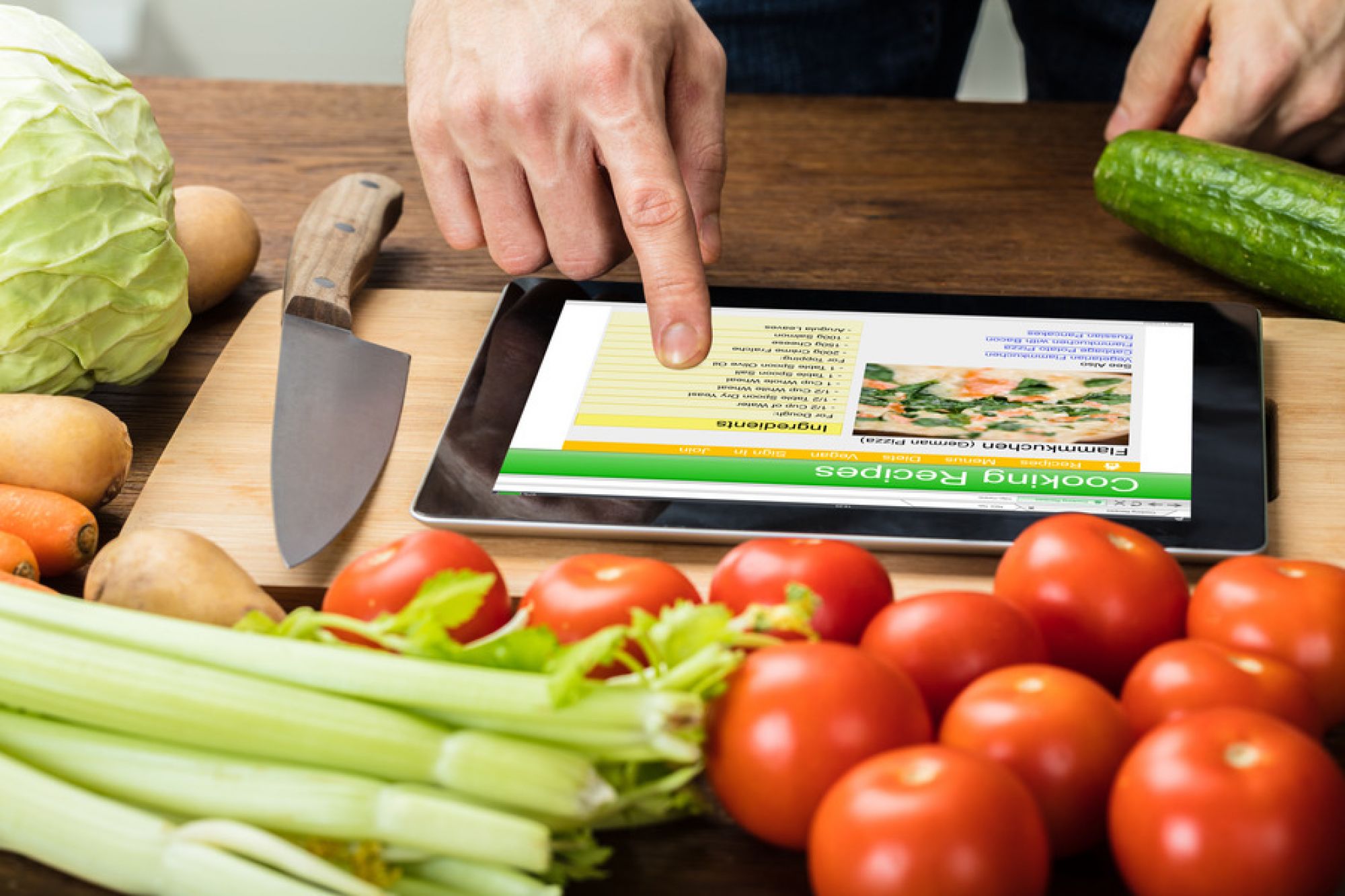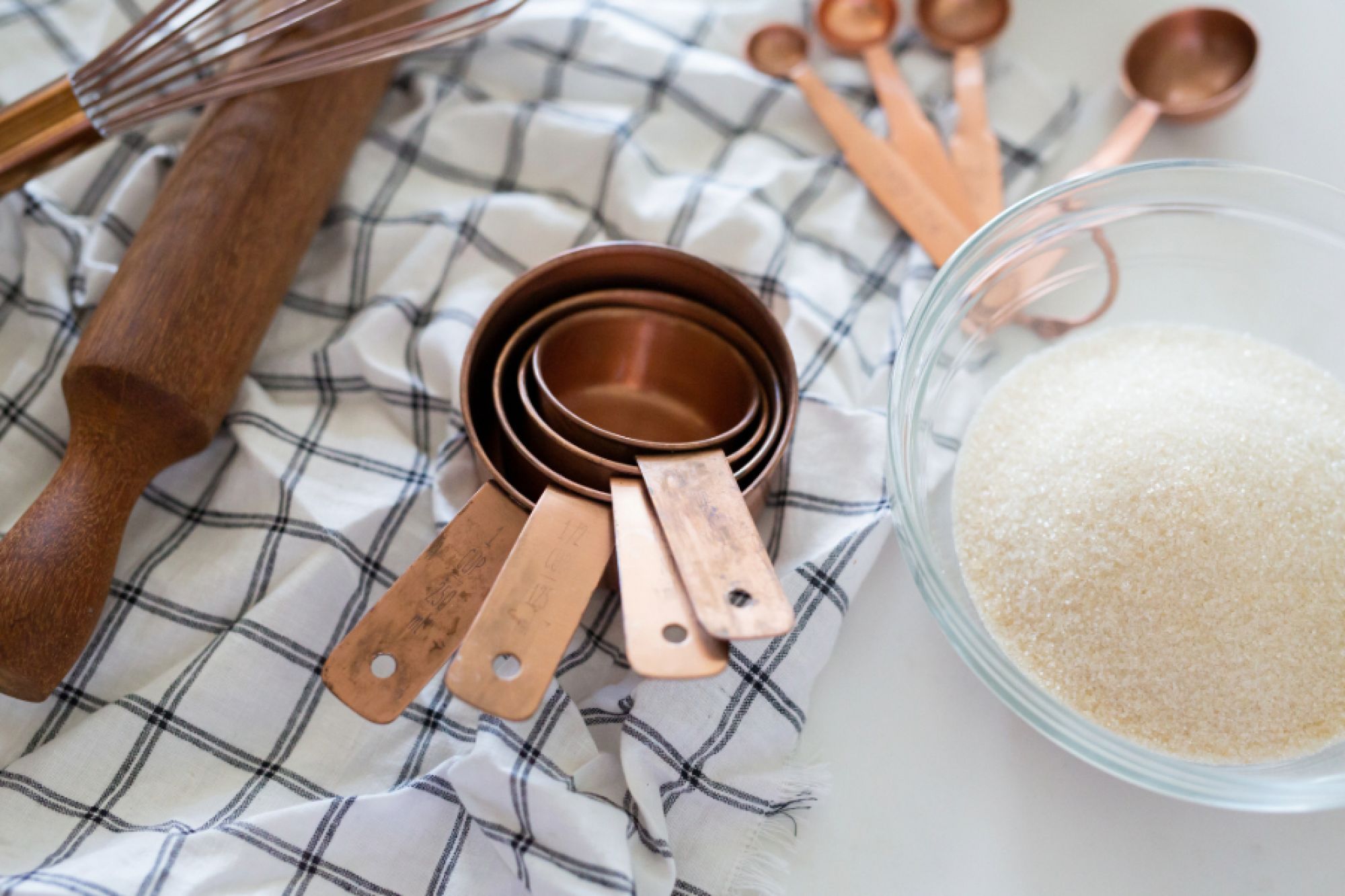Reading a recipe and measuring ingredients correctly saves time, helps avoid mistakes or surprises, and boosts your confidence in the kitchen! Follow these tips, and you won't get stuck halfway through making dinner.
Read the recipe from start to finish
This ensures you have all the key information needed including:
- The number of servings the recipe makes
- Cooking times
- Equipment needed
- Ingredients – these are listed in the same order that you're going to use them in the recipe
- How much of each ingredient you need
- How ingredients should be prepped, e.g. should the chicken be diced, or sliced?
It also gives you a chance to ensure you understand all the instructions and the order in which you should take each step.
Reading a recipe

Check ingredients and equipment
Make sure you really have all the ingredients and equipment called for in the recipe. For example, do you need a pot or a saucepan? Do you have all the ingredients in your kitchen, or is there something you’re missing?
Prepare and measure your ingredients
It’s much easier to do this before you start cooking, as it saves time and will be very helpful in getting timings right.
First, make sure everything that needs to be washed, chopped, sliced, diced etc. is prepared and set aside.
Next, measure anything that needs to be measured. Accurate measurement ensures the right balance of ingredients, which is important for achieving the desired flavours, textures, and consistency.
For dry ingredients like flour, rice, or spices, use dry measuring cups and measuring spoons. If you don’t have measuring cups and spoons, just use a standard cup and spoon. For liquid ingredients, e.g. milk, water us a measuring jug on a flat surface, bend down, and check the amount at eye level to ensure accuracy.
Measuring terms most commonly found in recipes are:
- Tsp – teaspoon
- Tbsp – tablespoon
- g – gram
- kg - kilogram
- Pinch - a small amount of an ingredient (usually salt) placed between the thumb and index finger
- 1 cup – 250ml/grams
Some older, less common terms that appear in recipes from time to time are:
- oz – ounce (about 28 grams)
- lb – pound (about 454 grams)
Measuring ingredients

Brush up on common cooking terms
Make sure you understand the words and phrases used in the recipe. Here are some of the most common terms you will encounter.
Browning
Cooking food (usually meat or onions) over medium to high heat until it develops a golden-brown colour. This adds flavour and improves texture.
Searing
Food (usually meat) is cooked at high heat for a short time to create a crispy, brown crust while keeping the inside juicy.
Al dente
Meaning “to the tooth” in Italian, this is when pasta is cooked to just firm.
Knead
To work a dough, like pizza dough, with your hands by stretching, folding, and pushing. This is done to add strength and texture. Make sure to check out our recipe for Super Easy Pizza Dough!
Reduce
To thicken a liquid or sauce by boiling, in order to enhance the flavour.
Sauté
To quickly cook food in a small amount of fat (e.g. olive oil) over a relatively high heat, usually used for vegetables.
Simmer
To cook in liquid that is just below boiling, with tiny bubbles are forming.
Stir-fry
To quickly cook small pieces of food over a high heat, using a relatively small amount of oil and stirring constantly.
Cooking methods

Follow the order of the recipe
Take note of the order in which ingredients are added and steps are followed. This ensures that everything is cooked just right!
Feeling confident reading recipes? Visit our Recipes Hub and put your skills to the test!

